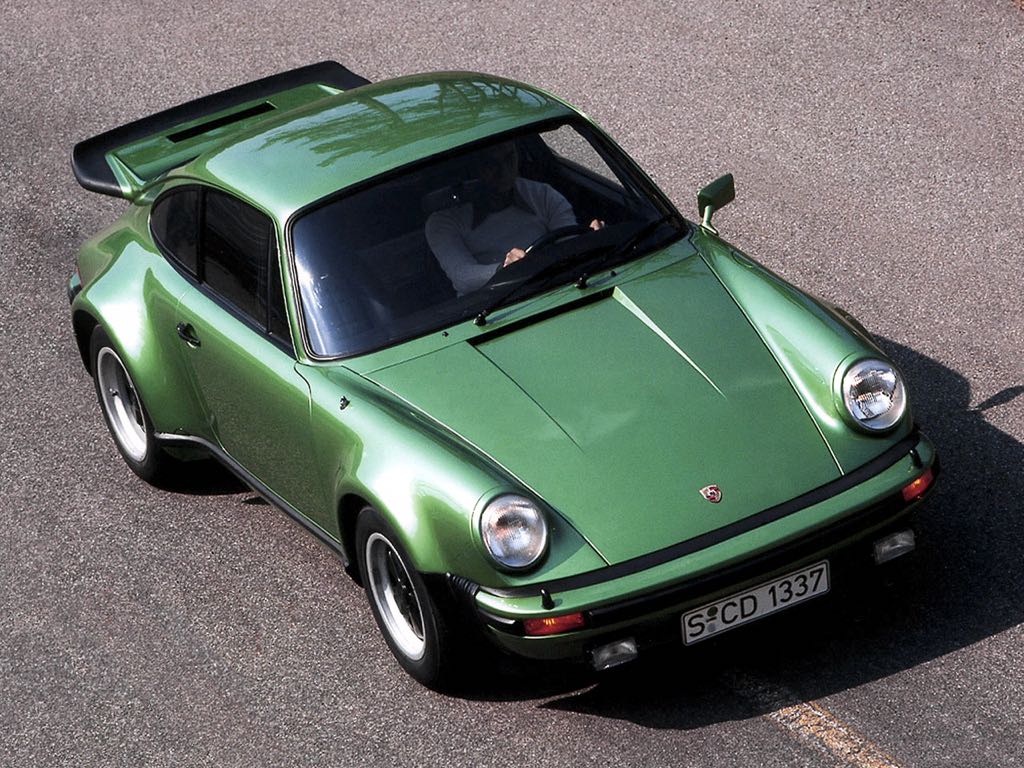930 Turbo 1975

The Porsche 930 Turbo, introduced in 1975, remains a remarkable icon in the world of sports cars. Not just a vehicle, it is a piece of automotive history that captures the essence of Porsche's engineering prowess and design innovation. Its introduction marked a significant shift in how high-performance cars were perceived, blending raw power with sophisticated technology.
When Porsche unveiled the 930 Turbo, it was more than just another model; it was the company's first production car to feature a turbocharged engine. This was a bold move that set new standards in the industry. The 3.0-liter flat-six engine, capable of producing 260 horsepower, was groundbreaking at the time. It wasn't just about speed; the car offered an exhilarating driving experience that few others could match.
Beyond its performance, the 930 Turbo also stood out for its unique design. The wide rear fenders, large rear wing, and aggressive stance gave it an unmistakable look. These design elements weren't just for show; they served functional purposes such as improved aerodynamics and better stability at high speeds. The 930 Turbo was a car that didn't just look fast; it was fast, and it performed exceptionally well on both road and track.
The Birth of a Legend
The 930 Turbo's journey began in the early 1970s when Porsche engineers started experimenting with turbocharging technology. Inspired by their success in motorsports, they aimed to bring this technology to their production cars. The result was the 930 Turbo, a car that combined race-proven technology with everyday usability.
One of the key challenges was managing the turbo lag, a common issue with early turbocharged engines. Porsche's solution was innovative: they used a single KKK turbocharger and employed clever engineering techniques to minimize lag. This made the 930 Turbo not only powerful but also more responsive than its competitors.
Its debut at the Paris Auto Show in 1974 left an indelible mark on enthusiasts and critics alike. The car's performance figures were impressive: 0-60 mph in just over five seconds and a top speed of around 155 mph. These numbers were unheard of for a road car at the time, cementing its status as a supercar.
Engineering Marvel
The heart of the 930 Turbo was its engine, but there was much more to its engineering excellence. The car featured advanced suspension systems and braking technologies that were ahead of their time. The four-wheel independent suspension provided excellent handling characteristics, while the large ventilated disc brakes ensured it could stop as well as it could go.
Additionally, Porsche paid great attention to weight distribution and balance. The rear-engine layout was a trademark of Porsche sports cars, and in the 930 Turbo, this layout contributed to its unique driving dynamics. The car had a tendency to oversteer, which could be challenging for inexperienced drivers but offered thrilling performance for those who knew how to handle it.
Design and Aesthetics
The design of the 930 Turbo was as revolutionary as its engineering. The flared wheel arches accommodated wider tires that improved grip and stability. The iconic "whale tail" rear spoiler wasn't just for aesthetics; it provided necessary downforce to keep the rear wheels planted during high-speed driving.
Inside, the 930 Turbo offered a driver-focused cockpit with high-quality materials and meticulous craftsmanship. The seats were designed for both comfort and support during spirited driving. The dashboard layout was intuitive, with all essential controls within easy reach.
A Lasting Legacy
The impact of the 930 Turbo extends beyond its production years. It paved the way for future generations of turbocharged Porsches and influenced other manufacturers to explore turbocharging technology. Even today, the principles established by the 930 Turbo can be seen in modern sports cars.
Collectors and enthusiasts continue to celebrate the 930 Turbo for its historical significance and driving experience. Well-preserved examples fetch high prices at auctions, reflecting their enduring appeal and value.
Table: Key Specifications
| Specification | Details |
|---|---|
| Engine | 3.0-liter flat-six turbocharged |
| Power | 260 horsepower |
| Top Speed | 155 mph |
| 0-60 mph | 5 seconds |
| Production Years | 1975-1989 (various versions) |
The Modern Perspective
Today, the legacy of the 930 Turbo is stronger than ever. It remains a benchmark for what a high-performance sports car should be: powerful, engaging, and beautifully designed. Modern iterations like the Porsche 911 Turbo continue to draw inspiration from this classic model.
Porsche has also embraced its heritage by producing limited-edition models that pay homage to the original 930 Turbo. These models blend classic design cues with modern technology, offering enthusiasts the best of both worlds.
The Porsche 930 Turbo is more than just a car; it's an enduring symbol of innovation and performance. From its groundbreaking introduction in 1975 to its lasting impact on automotive engineering and design, it has earned its place in history as one of the greatest sports cars ever made.
If you ever get the chance to experience or even see one up close, take it. The 930 Turbo isn't just part of automotive history; it's a living legend that continues to inspire generations of car enthusiasts around the world.